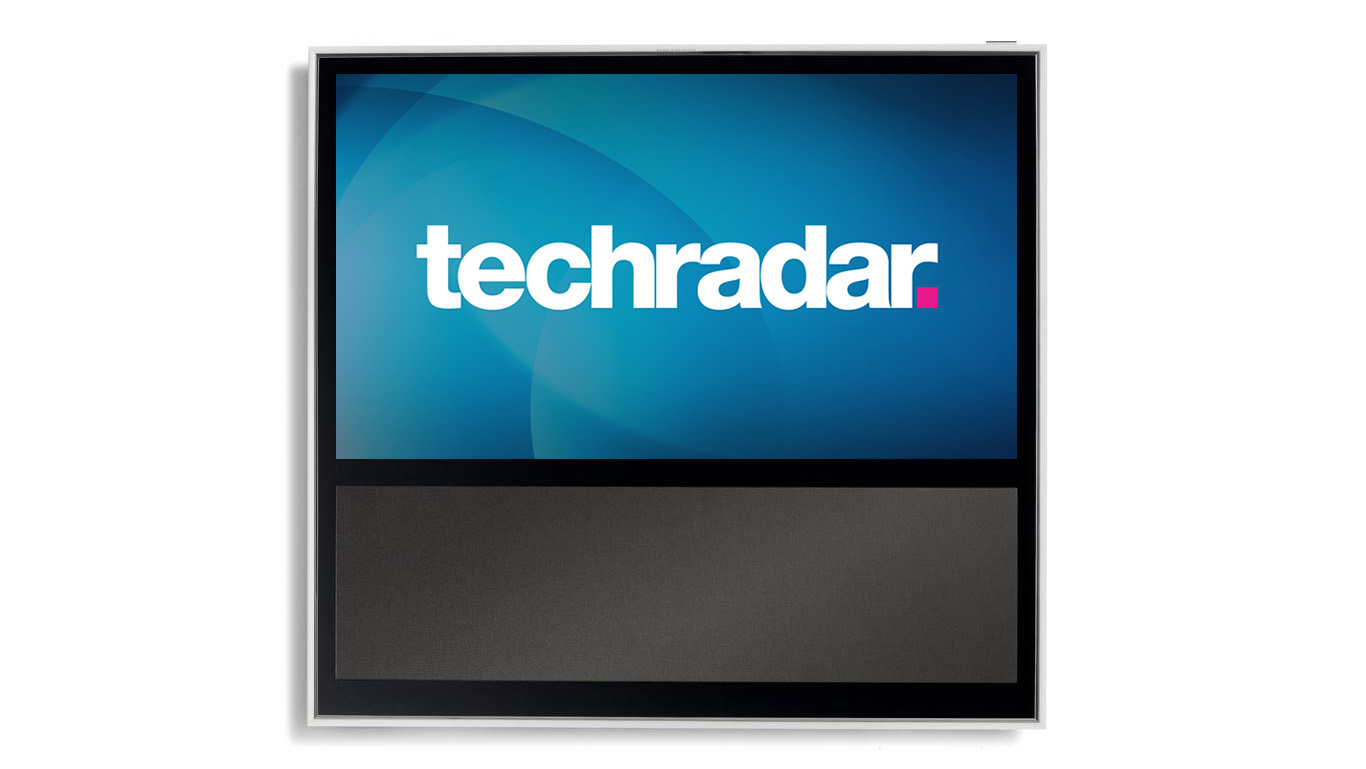TechRadar Verdict
With its grand-standing design, exquisite build quality, healthy feature count and best of all brilliant picture, this is a great, if expensive, TV
Pros
- +
Outstanding picture quality
- +
Even better sound quality
- +
Stunning luxury design
- +
System integration capabilities
Cons
- -
Expensive
- -
Limited online services
- -
Some control complexities
- -
Minor motion issues
Why you can trust TechRadar
Whenever you're talking about a Bang & Olufsen TV, two things are certain. First, it will enjoy a truly unique design and build quality. Second, it will cost far more than a similarly sized TV from any other brand you might care to mention. And so it is with the 40-inch Bang & Olufsen BeoVision 11, a luxury TV that costs an eye-watering £5,250 (around US$7,972 / AU$7,622) or more and looks like no other TV around right now.
The key feature of its design is that it places the 40-inch screen above a large panel containing a speaker system so potent it might humble a few audio separates, and then surrounds the whole lot with a strikingly bold metallic outer frame.
In the configuration we tested, this framed monolith was then mounted on a tilting bracket attached to a beautifully engineered, mechanically rotatable circular floor stand.
You can even customise the TV set's design to some extent, in ways we'll discuss in the Features section.
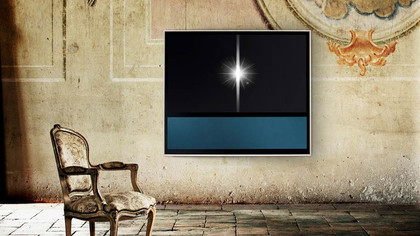
The Bang & Olufsen BeoVision 11's other most intriguing features are 3D playback if you stump up extra money for B&O's 3D glasses, plus multimedia playback via USB or networked PCs, the option to add a built-in 500GB HDD recording system, and even a slot on the TV's rear where you can attach one of the latest Apple TV boxes.
If 40 inches isn't big enough for you, the Bang & Olufsen BeoVision 11 can be had in spectacular 46-inch and 55-inch variations, with prices from £6,750 (around US$10,251 / AU$9,797) and £9,499 (around US$14,426 / AU$13,787) respectively.
In terms of rival products, there really isn't anything that truly sits alongside the unique B&O proposition. Loewe gets the closest, with the customisable looks and system integration potential of its Individual series.
Otherwise, so far as more mainstream pricing is concerned, we guess Samsung and Panasonic deliver the most aesthetically exciting new TVs, with models such as the Panasonic TX-L47ET60B and Samsung UE55F8000. But their appeal is based mostly on their lack of physical frames, rather than the B&O approach of making a large chassis an aesthetic positive rather than a negative.
Features
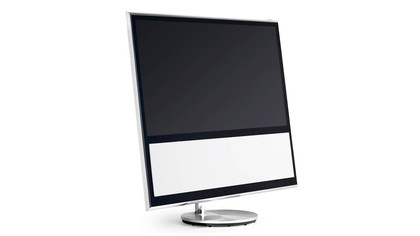
There's a lot to get through here, as you might hope with a luxury TV - kicking off with the Bang & Olufsen BeoVision 11's truly extraordinary design.
B&O's decision to create a monolith of a TV that stands only fractionally under a metre high ((891mm/35 inches) by the time you've taken into account its aggressive metallic frame and huge built-in speaker section) flies in the face of the latest super-slim TV trends. But it's so well built, so unique, so confident and combines boldness with understated elegance so carefully that it's seriously hard to resist.
You can customise the Bang & Olufsen BeoVision 11's looks too. The main TV frame can be had in either black or silver, the rear can be bought in white or black, and the cloth grille that sits over the speaker section in the TV's bottom third can be ordered in Petrol Blue, Red, White, Black, Silver or Grey.
There are multiple mounting options too. We used the gorgeous £725 (around US$1,102 / AU$1,052) circular and incredibly well made metal floor stand, upon which the TV can be rotated left or right via the remote. But there's also a £725 motorised wall mount option, a £365 (around US$555 / AU$530) non-motorised wall mount, and a £365 easel stand.
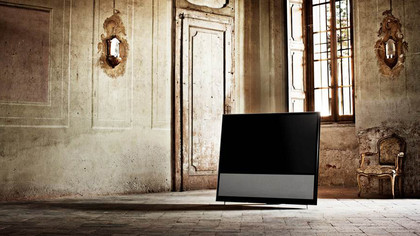
While we're on the subject of optional extras, you can build a 500GB hard disk recorder into the TV for £599 (around US$910 / AU$869), while the glasses you need to get to enjoy the TV's 3D playback - which uses the Full HD active system - cost £120 (around US$182 / AU$174) a pop.
Remarkably the Bang & Olufsen BeoVision 11 can also be partnered with as many as 10 - yes, 10 - external speakers, driven by B&O's own seriously clever and flexible TrueImage system. TrueImage can decode every surround sound system variant, and upmix or downmix it depending on the speaker configuration you're using.
In other words, if your speaker configuration doesn't include any ceiling channel speakers, rather than just ignoring that channel's audio information from a source the Bang & Olufsen BeoVision 11 will instead use processing to incorporate it into the sound produced by the speakers you do have.
Another excellent trick of the Bang & Olufsen BeoVision 11's audio handling is that it enables you to create up to nine different audio 'groups', so that you could, say, enable two rear speakers to function as a simple stereo music system during those times when just that part of the room is being used.
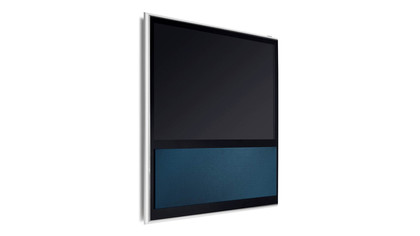
The television contains a remarkable group of six 32W class D amps, with the built-in speaker configuration comprising 3/4-inch tweeters, 2-inch mid-range drives and a 4-inch woofer for each stereo channel.
This is, of course, nothing short of jaw-dropping audio provision versus the puny sonic efforts built into the vast majority of LCD and plasma TVs. Indeed, the exceptional audio provision will arguably be enough in itself to justify the Bang & Olufsen BeoVision 11's high price for people who - rightly - consider sound to be as important a part of a good AV experience as pictures.
This is not to say, though, that B&O isn't also interested in pictures. On the contrary, it takes them very seriously indeed.
The TV has three picture modes, including a Game one that removes as much processing as possible to keep input lag low; a Movie mode that's built around the 6500K colour temperature generally accepted as producing the best video results; and an intriguing Adaptive setting with which the TV takes into account a bewildering number of factors in trying to optimise the picture automatically.
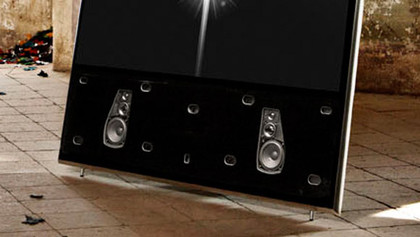
Part of the functionality behind this Adaptive mode is a sensor built into the TV's top edge that's capable of assessing light levels in a full 360-degree arc so that it can deliver a much more accurate calculation than most TVs' auto-picture settings of how to tweak the picture's colour, contrast and brightness settings in response to your room's lighting conditions.
B&O even rather cleverly uses this sensor in conjunction with an Adaptive Judder Cancellation feature, which takes account of the fact that your eyes are less susceptible to judder if you're viewing in a dark room.
You can even tell the TV how far away from it your main viewing position is, so that it can further adapt its settings accordingly.
This all makes the Bang & Olufsen BeoVision 11's adaptive picture setting one of the few such automated picture modes you might actually consider trusting.
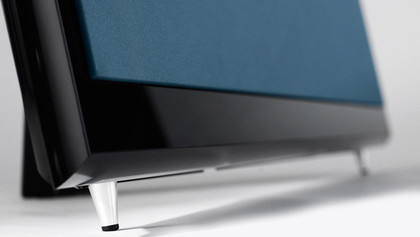
It's worth adding that all the processing in the TV is proprietary, developed in-house by B&O's regularly-meeting picture quality panel. And apparently the processing is extremely powerful, being capable of handling 125 billion calculations per second.
As with any ambitious TV these days, the Bang & Olufsen BeoVision 11 features multimedia playback from USB and networked DLNA devices, plus an online platform for streamed content. It carries built-in Wi-Fi to make using the network features as straightforward as possible.
We were also very impressed to find the TV's connections including an unprecedented six HDMI inputs, one of which you can access by popping out a little panel from just behind the TV's top edge. This is a great option for people wanting to temporarily attach a portable HDMI device, such as a digital camcorder.
There are a couple of weaknesses in the Bang & Olufsen BeoVision 11's feature set, though. The main one is that B&O's online features are off the pace set in such areas by the likes of Sony, Samsung and LG.
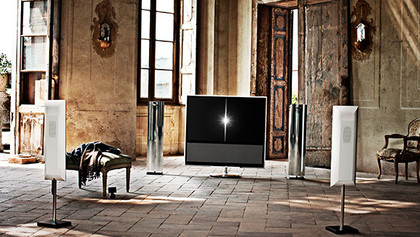
The only video streaming services of note in the UK are BBC iPlayer, YouTube, Euronews and iConcerts. There's no Netflix, no Lovefilm, no Blinkbox, no Acetrax, no ITVPlayer, no Demand 5… This really does put the set at a disadvantage in what's an increasingly important part of TV functionality.
Other apps include Funspot, Picasa, an internet browser, Facebook, and TomTom HD Traffic, but that really is about it so far as interesting stuff goes.
The other lesser weakness is that end users can't get their hands on such fine-tuning tools as colour and gamma management systems. B&O's thinking here is that its own processing systems are so good that there's no need for such in-depth calibration tools to be put at an end user's disposal (the relevant tools are available to B&O engineers, though).
We'll find out soon enough if B&O's automated processes are clever enough to make this argument ring true, but even so, there will be a few AV enthusiasts who will feel frustrated at not being able to get deep into the nitty gritty of colour and gamma management.
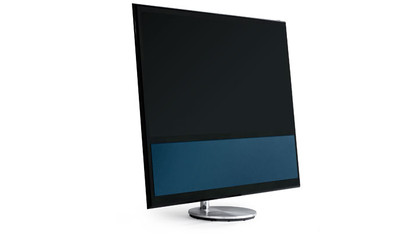
Wrapping up the features section are three apparent frivolities on paper that actually contribute surprisingly well to the all-round sense of opulence the Bang & Olufsen BeoVision 11 works so hard to capture.
First, as well as manually being able to rotate the TV on its stand via the remote, you can put preset angles into the TV for its on and off state, so that the TV can, say, turn back flat to a wall when you turn it off and rotate smoothly around to face you when you turn it back on.
Next, when you turn the TV off, the picture gradually disappears behind a pair of sliding black digital curtains rather than just flicking immediately off. And finally, as the virtual curtains draw across the screen, the sound also fades gradually away rather than just instantly disappearing.
As we said, this all sounds a bit gimmicky on paper. But in the flesh it feels like finery that no posh television should be without.
John has been writing about home entertainment technology for more than two decades - an especially impressive feat considering he still claims to only be 35 years old (yeah, right). In that time he’s reviewed hundreds if not thousands of TVs, projectors and speakers, and spent frankly far too long sitting by himself in a dark room.
